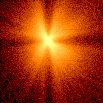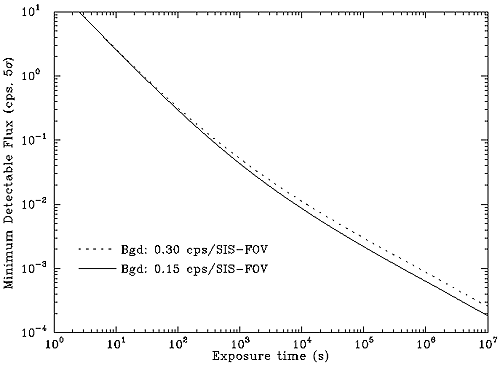The Advanced Satellite for Cosmology and Astrophysics (ASCA)
Overview
ASCA (formerly named Astro-D) is Japan's fourth cosmic X-ray astronomy mission, and the second for which the United States is providing part of the scientific payload. The satellite was successfully launched on February 20, 1993. The first eight months of the ASCA mission were devoted to performance verification. Having established the quality of performance of all ASCA's instruments, the project changed to a general/guest observer for the remainder of the mission. In this phase the observing program is open to astronomers based at Japanese and US institutions, as well as those who are located in member states of the European Space Agency.
Instrumentation
 ASCA
carries four large-area X-ray
telescopes. At the focus of two of the telescopes is a Gas Imaging
Spectrometer (GIS), while a
Solid-state Imaging Spectrometer
(SIS) is at the focus of the other two. The GIS is a gas imaging
scintillation proportional counter and is based on the GSPC that flew
on the second Japanese X-ray astronomy mission TENMA. The two SIS are
identical Charge Coupled Device (CCD) cameras were provided by a
hardware team from MIT, Osaka University and ISAS.
ASCA
carries four large-area X-ray
telescopes. At the focus of two of the telescopes is a Gas Imaging
Spectrometer (GIS), while a
Solid-state Imaging Spectrometer
(SIS) is at the focus of the other two. The GIS is a gas imaging
scintillation proportional counter and is based on the GSPC that flew
on the second Japanese X-ray astronomy mission TENMA. The two SIS are
identical Charge Coupled Device (CCD) cameras were provided by a
hardware team from MIT, Osaka University and ISAS.
Scientific Purpose
ASCA is the first X-ray astronomy mission to combine imaging capability with a broad pass band, good spectral resolution, and a large effective area. The mission also is the first satellite to use CCDs for X-ray astronomy. With these properties, the primary scientific purpose of ASCA is the X-ray spectroscopy of astrophysical plasmas-especially the analysis of discrete features such as emission lines and absorption edges.The sensitivity of ASCA's instruments will allow the first detailed, broad-band spectra of distant quasars to be derived. In addition, ASCA's suite of instruments provides the best opportunity so far for identifying the sources whose combined emission makes up the cosmic X-ray background.

ASCA
Appendix E: Figure 8.5: 5
![]() detection limit of
ASCA calculated assuming two different background rates, a PSF
appropriate for the SIS, and circular detection cells whose size is
optimized for the particular values of relative count rates. The bottom of
the figure (10
detection limit of
ASCA calculated assuming two different background rates, a PSF
appropriate for the SIS, and circular detection cells whose size is
optimized for the particular values of relative count rates. The bottom of
the figure (10![]() count s
count s![]() ) is the source strength
at which the predicted density is 1 per XRT HPD (using the Piccinotti
) is the source strength
at which the predicted density is 1 per XRT HPD (using the Piccinotti ![]() -
-![]() relationship) . The
average extragalactic background roughly corresponds to 0.15 count s
relationship) . The
average extragalactic background roughly corresponds to 0.15 count s![]() per SIS FOV,
some of which will be resolvable into individual sources at long
exposure times. The detection limits are broadly similar for SIS and
GIS and depend sensitively on the precise nature of the cosmic X-ray
background.
per SIS FOV,
some of which will be resolvable into individual sources at long
exposure times. The detection limits are broadly similar for SIS and
GIS and depend sensitively on the precise nature of the cosmic X-ray
background.
References: Tanaka, Y., Inoue, H. and Holt, S. S. 1994, "The X-ray Astronomy Satellite ASCA", Publ. Astron. Soc. Japan, 46, L37
If you have any questions concerning ASCA, visit our Feedback form.

